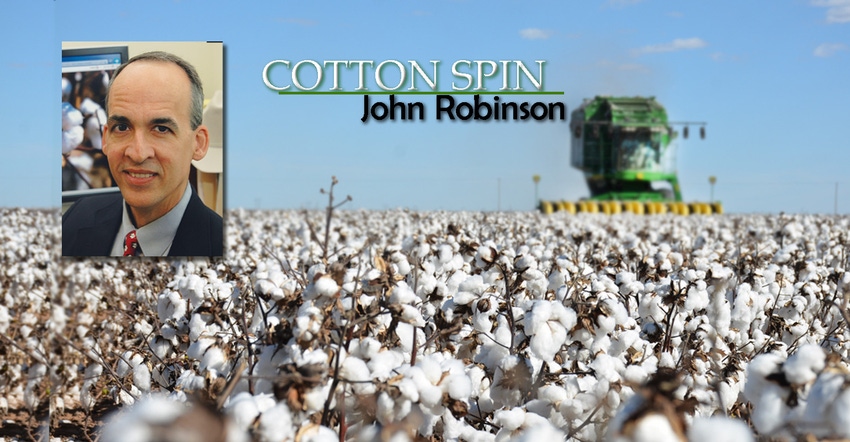
USDA's month-over-month adjustments in the November WASDE report were fairly small and/or offsetting – in other words, a whole lot of nothing. Or at least nothing to justify upside price volatility.
On the world supply side of things, beginning stocks were raised 200,000 bales, mostly from a 100,000-bale increase in India. World production was raised 860,000 bales, mostly in the U.S. (+270,000) and several other minor producing countries. World imports were raised by a mere 70,000 bales, resulting from a half-million bale increase in China, mostly destined for their state reserves, was mostly offset by cuts in several importing countries.
On the demand side, world exports were also raised 70,000 bales resulting from a handful of offsetting adjustments. World consumption was cut 490,000 bales, mostly in Vietnam (-200,000), Turkey (-100,000), the U.S. (-100,000), Mexico (-50,000) and Thailand (-50,000).
The bottom line of the world situation is more cotton supply and reduced cotton consumption, adding up to a 1.58-million-bale-increase in world ending stocks, month-over-month. The direction and resulting level of the adjustment would be neutral to modestly price weakening according to history and economic theory (see Figure 1). Moreover, the static aspect of the demand adjustments, other than the policy-driven Chinese Reserve imports, is not particularly encouraging.
Figure 1. A-Index of World Cotton Price vs. Monthly World Cotton Stocks-to-Use Ratio.

Updated U.S. cotton supply/demand
The adjustments to U.S. supply were similarly bearish as the 270,000 bale net increase in production was reinforced by the 100,000-bale cut to domestic use. The bottom line of this was a 400,000-bale month-over-month addition to U.S. ending stocks, to 3.2 million bales (see balance table above). This month-over-month adjustment would be moderately price weakening in its size/direction but neutral in the resulting level.
I remind readers that USDA is zeroing in on the final estimate of U.S. cotton production for the 2023 crop. Their monthly adjustments have been shrinking from -2.5 million bales (in August), to -860,000 bales (in September), to -310,000 bales (in October), to +270,000 bales (in November). We are probably only a couple of 100,000-bale adjustments from the final number. This means that whatever uncertainty premium has been supporting cotton prices this fall will be fading.
For additional thoughts on these and other cotton marketing topics, please visit my weekly on-line newsletter at http://agrilife.org/cottonmarketing/.
About the Author(s)
You May Also Like




